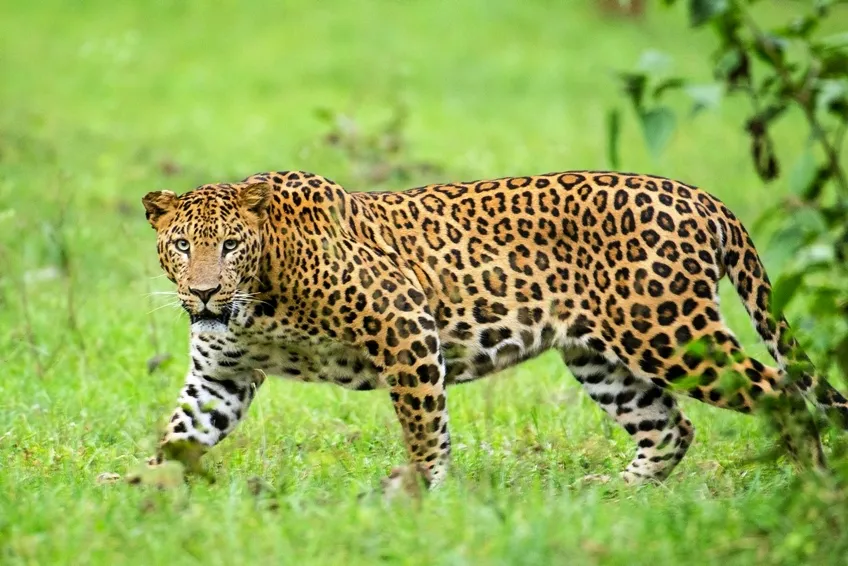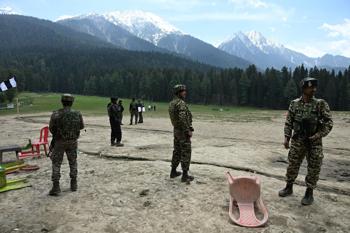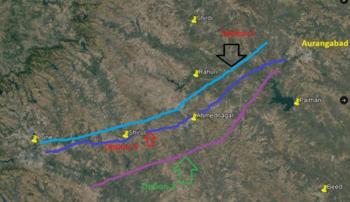Leopard Attack in Shirur Claims Life of 4-Year-Old Boy
A heart-wrenching incident in Mandavgan Pharata, a small village in Pune District’s Shirur Taluka, has left the community in shock. A 4-year-old boy lost his life in a sudden leopard attack, highlighting the growing tension between wildlife and human habitation in rural Maharashtra.
The victim, Shivtej Tembhekar, had traveled with his family to Mandavgan Pharata to celebrate Diwali. On what should have been a joyful holiday morning, tragedy struck. Around 6:30 am, while Shivtej was playing outside his house near the sugarcane fields, a leopard emerged from the dense vegetation and attacked him from behind.
Despite the frantic efforts of his parents and grandfather, who were nearby, the leopard managed to drag Shivtej into the fields. Their cries for help echoed through the village, but the animal proved too strong to overpower.
The Forest Department’s Shirur Division was immediately notified and launched a search operation. Sadly, Shivtej was found lifeless in the area where he was taken. An autopsy later confirmed the cause of death, adding a grim conclusion to an already devastating incident.
A Village on Edge
This incident has reignited fears among villagers, who had previously reported frequent leopard sightings near their homes. Just days before, residents had voiced their concerns to the Forest Department, urging action to prevent such tragedies.
Following the attack, the Forest Department intensified their efforts to capture the leopard and prevent further incidents. A comprehensive operation was launched, including:
- 22 cages placed strategically across the area.
- 10 camera traps to monitor the animal’s movements.
- A thermal drone for nighttime tracking.
The department also conducted emergency safety sessions for villagers, offering advice on minimizing risks and staying vigilant until the leopard is captured.
Leopard attacks in Maharashtra have been on the rise, especially in regions where agricultural fields and forests overlap. Sugarcane fields, in particular, often serve as a perfect hiding spot for these big cats. While conservation efforts have increased leopard populations, the shrinking of their natural habitats has forced them closer to human settlements in search of food.
Experts note that leopards are highly adaptable predators, which is why they thrive even in human-dominated landscapes. However, this adaptability comes with its own set of challenges. Villagers are often left vulnerable, especially during early mornings or late evenings when leopards are most active.
The tragic loss of young Shivtej underscores the urgent need for effective coexistence strategies between humans and wildlife. While conservation is essential, protecting human lives must also be a priority. Initiatives such as:
- Community awareness programs.
- Safe waste management to avoid attracting prey animals like dogs.
- Enhancing natural prey populations in forests to reduce leopard foraging in villages.
can help mitigate such conflicts in the future.
The death of Shivtej has left a lasting impact on the village of Mandavgan Pharata. His family is devastated, and the local community remains on edge as they await news of the leopard’s capture. The incident is a sobering reminder of the fragile balance between human activity and wildlife.
As the search operation continues, villagers hope for swift action to prevent another tragedy. This heartbreaking event also raises broader questions about how we can coexist with nature in a rapidly changing world. How do we strike the right balance between wildlife conservation and human safety? The answer may shape the future of rural living in India.









Leave a comment
0 comment